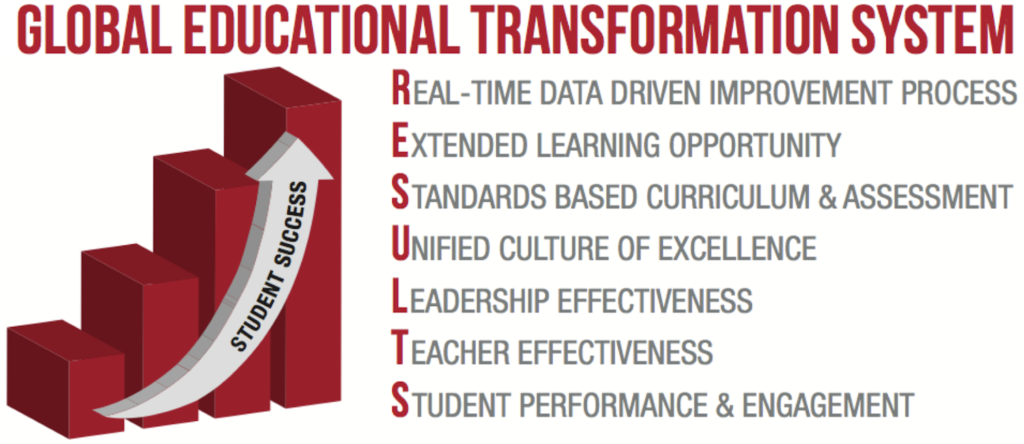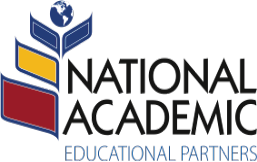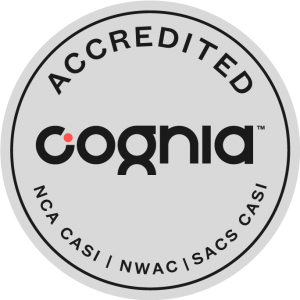School Transformation & Turnaround Solutions
Proven Track Record of School Improvement
School turnaround and transformation requires experience, research, personnel, time, and so much more. Why do it alone? Collectively as a team and via the experience of our seasoned “Certified School Improvement Specialists” (CSIS) certified by the Institute for Performance Improvement” – we’ve transformed more than 100 schools as a school improvement partner. Let us support and guide your transformational journey, training you and your team along the way so that soon, you’re empowered to transition from transformation, to acceleration.
NAEP’s leadership, instructional, and general school and school district support services are founded in today’s latest research-based and field proven educational support strategies, ranging from Mass Insight’s “Turnaround Challenge” to Bambrick-Santoyo’s work in Leverage Leadership to leadership strategies researched by the Wallace Foundation. It is our belief that the role of an educational support partner and consultant is to provide systemic change and a paradigm shift in which stakeholders collaborate, are highly committed and that school improvement action is cohesive and customized to the needs of the client. Through extensive experience, NAEP’s support team creates value-added leadership and teacher development efforts and school support processes that balance theory and tangible job-embedded practice to truly enhance the classroom experience and level of instruction at any school or district it partners with.
Together with dedicated educators, NAEP strives to eliminate patterns of underachievement and move towards student centered-institution and universal high achievement in all schools by using its educational service support methodology, Global Educational Transformation System (G.E.T.S.): R.E.S.U.L.T.S. model comprised of the following seven elements:

A Customized Approach
To Maximize Grant Funds & Other Resources for School Improvement
No school, school district, or school community are the same. NAEP customizes every school improvement partnership, starting with a comprehensive needs assessment and partnering with client leader champions to collaboratively design and implement the school improvement effort. Whether your school or school district has access to one of the support fund categories below or another source, our school improvement and grant compliance teams partner to help you leverage and maximize every dollar and every minute to align ALL efforts and resources towards efficient, swift, school improvement efforts:
- School Improvement Grants (SIG): SIG provides funds to support the turnaround of low-performing schools, including both charter schools and traditional public schools.
- Title I Grants: Title I funds are aimed at improving educational opportunities for students in schools with high concentrations of poverty. These funds can support a variety of initiatives, including school improvement efforts.
- Charter Schools Program (CSP): CSP provides funding to support the planning, development and initial implementation of charter schools, including efforts to enhance and replicate successful charter school models.
- Teacher and School Leader Incentive Program: This program supports efforts to develop, implement and evaluate teacher and school leader incentive programs in high-need schools, which could include transformation initiatives.
A Tangible, Actionable, Researched-Based Framework
To Get R.E.S.U.L.T.S!
School improvement efforts can fall apart if the consultant partner, school leaders and educators, district leaders, and other stakeholders are not aligned as to the tangible metrics and goals by which the transformational efforts will be measured. Our R.E.S.U.L.T.S. model is a tangible framework that avoids educational jargon and pinpoints the most value-added levers and process points that will yield the most dramatic, sustainable, and valuable school improvement results. Take a look at each proprietary R.E.S.U.L.T.S. model domain below to see how NAEP’s partnership journey develops key school protocols and processes as we partner and accelerate education together.
Real-Time Data-Driven Improvement Process is the analysis of data in a timely manner to drive the instruction to promote student achievement that is aligned to the necessary levels of career and college readiness.
- Data Collection System – School Personnel utilize the developed and/or acquired research-based assessment tools in a consistent manner to track and monitor student’s academic proficiency and progression, including formal and informal formative and summative assessment processes.
- Proactive Data Analysis – Instructional personnel plan ahead with regards to the collection and analysis of critical data regarding school and student performance that includes multiple measures such as academic, attendance and behavior indicators and specific benchmarks thereof.
- Rubric for Successful Evaluation – School Leaders and teachers follow a consistent process to conduct ongoing analysis of student challenges and strengths by using assessment data, along with student and teacher surveys.
- Data as a Decision Driver – School leaders and teachers utilize data to make key decisions, from the selection of professional development to student placement in classrooms and intervention and enrichment programming.
- Targeted Student-Centered Achievement Goals – Teachers collaborate with students to set measurable targets for improved achievement and engage and increase student ownership of their data.
- Targeted School & Teacher Achievement Goals – Administration and teachers collaborate in setting measurable targets for improved achievement and student outcomes at the student, classroom, grade and school levels.
Extended Learning Opportunity (ELO) is designed to improve the educational performance of targeted students through learning assistance programs that are supplemental to the required basic instruction. ELO provides students with targeted instructional support for reinforcement, remediation and enrichment of national, state and local standards. The main goal of an ELO is to close the achievement gap for students performing below grade level expectations and to provide an enriching experience for students in a safe and welcoming environment.
- ELO Component Alignment – School leaders select ELO curriculum and allocate ELO personnel based on the specific needs of the students within the program.
- Targeted Professional Development – School leaders ensure that teachers receive Professional Development that provides support in the implementation and delivery of the resources being utilized during ELO.
- Progress Monitoring System – School leaders and teachers implement a system of continuous feedback to track overall ELO programming effectiveness through monitoring student work folders, attendance, conducting walkthroughs, and feedback from formative assessments.
- Enriched Student Learning Opportunities – Teachers provide experiences within the ELO program that will focus on complementing rather than duplicating school learning.
Standards-Based Curriculum and Assessment provides a cyclical framework to align instruction, curriculum and assessment to the district, state and national standards including the Common Core State Standards (CCSS), where relevant. Through the implementation of research-based practices, practitioners will be guided towards excellence in the development and refinement of the design of their instructional practices as we promote the rigor and relevance students need to be successful in the 21st century student toward career and college-readiness.
- Sequential Instructional Scope – Teachers and instructional coaches develop strategic instructional scopes, curriculum frameworks and/or pacing guides that align to the school’s curriculum and local, state and national standards.
- Strategic Professional Development – Professional development provided through a data-driven/needs-based process and a standardized “best practices” professional development format provided to teachers and administrators.
- Formative Assessments – Administrators, teachers and instructional coaches develop a customized approach to creating and implementing formative benchmark assessments to align with local, state and national standards.
- NAEP Coaching Model – Teachers develop their craft by participating in a systematic capacity building process of customized instructional support through the NAEP Coaching Model.
- Instructional Calendars – Teachers and instructional coaches create standards-based, data-driven instructional focus calendars that align to local, state and national assessments including those developed by the assessment consortiums.
The purpose of a Unified Culture of Excellence is central to building positive student success and holistic school transformation. The ultimate goal of a Unified Culture of Excellence is to collaboratively unite parents, teachers, students, staff and the community to help all schools acquire the academic, behavioral and climate tools needed to develop and access cultures that continue to drive excellence, which moves student achievement one child, one classroom and one school at a time together.
- Classroom Culture – Teachers assess the culture of individual classrooms that are conducive to learning.
- Culture of Unified Student Success – Administration and teachers develop high expectations for learning and achievement.
- Safe School Culture – Administration and teachers cultivate a safe and caring learning environment.
- Culture of Recognition and Achievement – Administration and teachers promote high student motivation and engagement.
- Professional Faculty Culture – Administration and teachers endorse a professional faculty culture through
- Cultural Competency – Diversity among students and adults is utilized as a source of connection and understanding, as opposed to a barrier for collaboration and cooperation.
- Sequential Instructional Scope – Teachers and instructional coaches develop strategic instructional scopes, curriculum frameworks and/or pacing guides that align to the school’s curriculum including the local, state and national standards including Common Core State Standards, where applicable.
- Strategic Professional Development – Professional development both through a data-driven/needs-based process and a standardized “best practices” professional development format provided to administrators, instructional coaches and teachers.
- Formative Assessments – Administrators, instructional coaches and teachers develop a customized approach to creating and implementing formative benchmark assessments to align with local, state and national standards including the Common Core State Standards, where pertinent.
- NAEP Coaching Model – Teachers develop their craft by participating in a systematic capacity building process of customized instructional support through the NAEP Coaching Model.
- Instructional Calendars – Instructional coaches and teachers create standards-based, data-driven instructional focus calendars that align to local, state and national assessments including those developed by the assessment consortiums.
Leader Effectiveness is grounded in the national standards for accomplished transformational and strategic leadership promoted by the Center for Educational Change. Leader effectiveness is developed through guided job-embedded practice and demonstration of accomplished performance in each of nine research-based components designed to increase the capacity of school and district leaders. The overarching aim in the domain Leader Effectiveness is to facilitate effective improvement in teaching and learning and consecutively increase student engagement and performance so that all students are prepared to meet career and college readiness expectations.
- Leading by Results and Design – School leaders set measurable and ambitious goals segmented by actionable steps to reach the targeted end in mind.
- Developing a Vision and School Mission – School leaders collaborate to create a shared vision and mission through which various stakeholders form a sense of commitment.
- Leading Teaching, Learning and Accountability – School leaders provide effective, high-impact leadership in the development, implementation, and monitoring of a rigorous, relevant and balanced curriculum to ensure optimal student learning and achievement.
- Knowing Stakeholders – School leaders build trust and foster positive working relationships on the basis of appropriate values and ethical foundations within the entire school community.
- Building a Culture of Learning – School leaders set and value high expectations, respect and embrace diversity, support innovation and creativity, and address diverse talents and learning styles.
- Leading Strategically – School leaders implement strategic management processes to help focus collective energy and efforts to ensure that school members are working toward the same goals.
- Marketing the School – School leaders effectively advocate both internally and externally for the advancement of the school’s mission and educational goals by galvanizing all stakeholders to support student learning and school success.
- Demanding ethical behavior – School leaders dedicate themselves to modeling, promoting, and maintaining high standards of ethical behavior throughout the school community.
- Engaging in professional learning and self-reflection – School leaders engage in a process of personal reflection that allows them to share their experiences, successes, and challenges with colleagues and raise questions that foster collaborative personal and professional learning and growth.
- Sequential Instructional Scope – Instructional coaches and teachers develop strategic instructional scopes, curriculum frameworks and/or pacing guides that align with the school’s curriculum and local, state and national standards including Common Core State Standards, where relevant.
- Strategic Professional Development – Professional development both through a data-driven/needs-based process and a standardized “best practices” professional development format provided to teachers and administrators.
- Formative Assessments – Administrators, instructional coaches and teachers develop a customized approach to creating and implementing formative benchmark assessments to align with local, state and national standards, including the Common Core State Standards, where applicable.
- NAEP Coaching Model – Teachers develop their craft by participating in a systematic capacity-building process of customized instructional support through the NAEP Coaching Model.
- Instructional Calendars – Instructional coaches and teachers create standards-based, data-driven instructional focus calendars that align with local, state and national assessments, including those developed by the assessment consortiums.
A process and cycle of teacher development that is embedded in the National Standards for Effective Teaching and is driven by state, district and school-based needs. Teacher effectiveness is developed through several research-based components designed to increase the capacity of instructional pedagogy. The ultimate goal of Teacher Effectiveness is designed to move student achievement one child, one classroom and one school at a time.
- Research-Based Differentiated Instruction – Teachers use a purposeful array of activities and resources including hands-on and group work to engage students.
- Classroom Integrated Technology – Teachers have a firm grasp of available technology and understand how it enhances the instructional process.
- Dynamic Professional Learning Communities – Teacher planning at the collaborative level consists of interactions that are authentic, active and timely.
- The school’s Master Schedule provides for the same content area teacher planning periods.
- The school has an implementation plan for each PLC that consists of a framework that is easy to monitor and has measurable desired outcomes.
- All instructional staff receive adequate training on how to effectively implement a successful PLC.
- School and District Leaders have a monitoring plan to assess the effectiveness of the PLC that contains measurable objectives such as the increased use of a specific instructional methodology in every classroom by a certain time frame.
- Targeted Individual Teacher Planning – Effective teacher planning at the individual level is focused and aligned to standards and research.
- Proactive Classroom Management System – Teachers exercise classroom management to ensure a conducive learning environment.
- Integrated Content Knowledge and Instructional Delivery – Teachers demonstrate optimal balance of content knowledge and instructional delivery
- Understanding of Student Needs – Teachers design lessons based on individual and group student needs.
- Student Achievement Based Professional Development – Professional Development reflects best practices and is based on real-time teacher and student needs.
- Targeted Instructional Mentorship – Coaches and/or department chairs promote teacher growth through effectively providing in-class, job-embedded service and support.
- Balanced & Objective Teacher Capacity Development Process – Teacher capacity development systems target student achievement through recognizing teacher growth while prescribing an action plan for areas of opportunity.
- Leading by Results and Design – School leaders set measurable and ambitious goals segmented by actionable steps to reach the targeted end in mind.
- Developing a Vision and School Mission – School leaders collaborate to create a shared vision and mission through which groups of people form a sense of commitment.
- Leading Teaching, Learning, and Accountability – School leaders provide effective, high impact leadership in the development, implementation, and monitoring of a rigorous, relevant and balanced curriculum to ensure optimal student learning and achievement.
- Knowing Stakeholders – School leaders build trust and foster positive working relationships on the basis of appropriate values and ethical foundations within the entire school community.
- Building a Culture of Learning – School leaders set and value high expectations, respect and embrace diversity, support innovation and creativity, and address diverse talents and learning styles.
- Leading Strategically – School leaders implement strategic management processes to help focus collective energy and efforts to ensure that school members are working toward the same goals.
- Marketing the School – School leaders effectively advocate both internally and externally for the advancement of the school’s mission and educational goals by galvanizing all stakeholders to support student learning and school success.
- Demanding ethical behavior – School leaders dedicate themselves to modeling, promoting and maintaining high standards of ethical behavior throughout the school community.
- Engaging in professional learning and self-reflection – School leaders engage in a process of personal reflection that allows them to share their experiences, successes and challenges with colleagues and raise questions that foster collaborative personal and professional learning and growth.
- Sequential Instructional Scope – Teachers and instructional coaches develop strategic instructional scopes, curriculum frameworks and/or pacing guides that align to the school’s curriculum and local, state and national standards including Common Core State Standards, where applicable.
- Strategic Professional Development – Professional development both through a data-driven/needs-based process and a standardized “best practices” professional development format provided to teachers and administrators.
- Formative Assessments – Administrators, instructional coaches and teachers develop a customized approach to creating and implementing formative benchmark assessments to align with local, state and national standards, including the Common Core State Standards, where relevant.
- NAEP Coaching Model – Teachers develop their craft by participating in a systematic capacity building process of customized instructional support through the NAEP Coaching Model.
- Instructional Calendars – Instructional coaches and teachers create standards-based, data-driven instructional focus calendars that align with local, state and national assessments, including those developed by the assessment consortiums.
Student Engagement and Performance is deeply rooted in national and state curriculum standards. Student Engagement and Performance is increased through job-embedded instructional support and coaching that allows educators to demonstrate distinguished performance in each of five research-based components designed to build the capacity of school leaders and teachers. The overarching objective of Student Engagement and Performance is to develop educators to ensure they are prepared to provide rigorous and relevant instruction to meet the emerging needs of all learners.
- Expectation for Student Learning – School leaders and teachers establish and maintain belief systems of high expectations for student learning and success for all built on routines that capture the learner’s interest in attaining success.
- Culture of Active Learners – Teachers plan activities and lessons that are stimulating in order to ignite students’ thinking, which produces learning environments where academic excellence is cultivated.
- Sustainable Student Engagement – Teachers are committed to engaging students in routines that ensure a disciplined learning environment built on instructional goals that meet the needs of individual students as well as the needs of the class as a whole.
- Performance-Based Instructional Design – Instruction and assessments are standards based and developed to evaluate student growth and mastery of desired learning outcomes. Multiple measurement tools are utilized to establish a fluid evaluation system that can be modified based upon student data and teacher observation.
- Student-Driven Progress Monitoring Plan – Teachers create an environment that encourages students to take ownership of their individual growth as a learner and empowers them to develop a self-monitoring plan of their learning progression.



